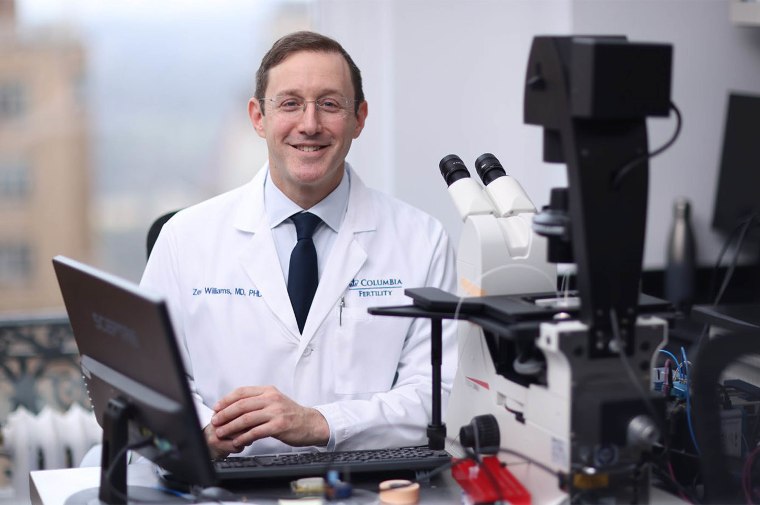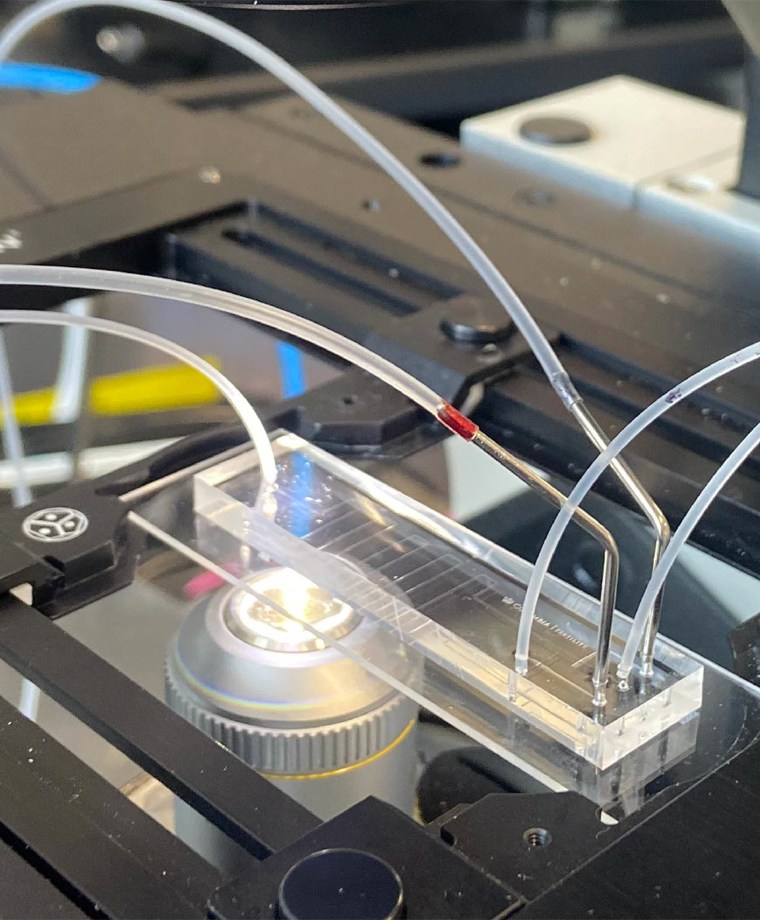It’s a complex process to identify a new star within a congested galaxy. It’s equally as trying to isolate cells viable for reproduction in someone struggling with infertility. A new artificial intelligence process developed at Columbia University Fertility Center, however, has done it, resulting in what they are calling "the first AI-enabled conception."
Sperm Tracking and Recovery, or STAR, inspired by astrophysics processes of identifying novelties in space, filters through semen to find the few sperm cells in samples from men diagnosed with azoospermia. The condition causes no or limited amounts of sperm cells in semen. Whereas the typical sperm count might range from 15-200 million per milliliter of semen, azoospermia leads to only 2-3 sperm cells or no measurable sperm count at all.
Azoospermia “is really a heartbreaking and often completely surprising diagnosis,” Dr. Zev Williams, director of Columbia University Fertility Center and creator of STAR, tells TODAY.com.
“Most of the men who have had this diagnosis are completely healthy. They have normal male sexual function. The semen sample to the unaided eye looks completely normal.”
Typically, after struggling with fertility, men will have their semen analyzed, and the microscopic view will show it’s full of standard fragments and debris but no sperm. This is where STAR comes in.
 Dr. Zev Williams has been working on developing STAR for five years.Columbia University Fertility Center
Dr. Zev Williams has been working on developing STAR for five years.Columbia University Fertility CenterUsing a process that involves high-powered imaging, a microfluidic chip works its way through a semen sample, taking more than 8 million images in less than an hour. Then, using AI, it identifies sperm cells. The chip is engraved with a series of grooves and channels as thin as a human hair that can isolate portions of the semen sample containing the rare sperm cells.
A robot then removes the individual sperm cells within a millisecond of discovery, and the cells are stored. After that, the rest of the implantation process shifts to in-vitro fertilization handled by an embryologist.
In March 2025, a woman using the pseudonym Rosie (to protect her privacy) received the first successful embryo transfer fertilized by cells retrieved with STAR. She’s now pregnant.
She and her husband had been trying to conceive for 18 years. Through a fertility support group, she learned about the technological development, and her physician, another Columbia doctor, connected her and her husband with Williams.
“Imagine searching for a single needle hidden among a thousand haystacks scattered across 10 football fields — and finding it in under two hours. That’s the level of precision and speed delivered by the STAR system. Using AI, microfluidics, and robotics, it combs through a seemingly lifeless semen sample to identify and isolate a single viable sperm cell, making the impossible possible for men once told they had no chance of biological fatherhood,” Williams explained in a press release.
Speaking to TODAY.com, he adds: “Until now, it's been really, really difficult, bordering on impossible, to be able to find and get those sperm. So, the options have typically been either to use donor sperm or to try undergoing a painful surgery where a portion of the testes is actually removed and they look in the testes to try to find sperm.”
In development for five years, STAR retrieves sperm cells without damaging the semen sample — unlike traditional methods of identifying sperm cells, which typically involve multiple rounds of centrifuging (spinning the sample to isolate the cells), lasers, stains or dyes.
“If you’re actually planning to use that sperm to fertilize an egg, you have to be exquisitely gentle and delicate and careful that you’re not using things that can be damaging to that one cell because it’s that one that cell will end up resulting in every cell in the offspring,” Williams says.
 Doctors at Columbia University Fertility Center have reported what they are calling the first AI-enabled conception.Columbia University Fertility Center
Doctors at Columbia University Fertility Center have reported what they are calling the first AI-enabled conception.Columbia University Fertility CenterSTAR isn’t the first AI fertility technology, but it is the first of its kind. Other AI fertility processes can predict embryo viability, analyze datasets, and some can even diagnose.
Now, more patients are in what Williams calls the “banking stage” — they’re isolating and freezing sperm cells found and retrieved with STAR to hopefully fertilize eggs.
“All of us are just so incredibly excited that we’re able to now help patients that were never able to be helped before,” says Williams. “And it’s kind of amazing that we’re using artificial intelligence to help create real life.”
“There’ll be this child and thousands more who (wouldn’t exist), were it not for the help of the whole team who developed this and how advanced the AI technology has gotten. That’s a pretty incredible output from this technology.”
.png)



